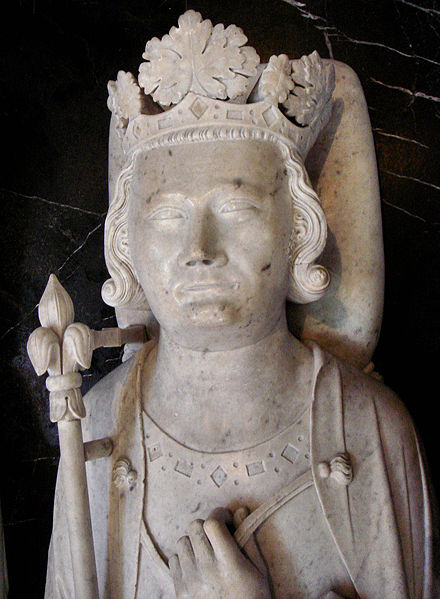In France under the Ancien Régime, the Estates General or States-General was a legislative and consultative assembly of the different classes of French subjects. It had a separate assembly for each of the three estates, which were called and dismissed by the king. It had no true power in its own right as, unlike the English Parliament, it was not required to approve royal taxation or legislation. It served as an advisory body to the king, primarily by presenting petitions from the various estates and consulting on fiscal policy.
Opening of the Estates General on 5 May 1789 in the Grands Salles des Menus-Plaisirs in Versailles.
Caricature from 1789 with the Third Estate carrying the First Estate and Second Estate on its back
Philip IV, called Philip the Fair, was King of France from 1285 to 1314. By virtue of his marriage with Joan I of Navarre, he was also King of Navarre as Philip I from 1284 to 1305, as well as Count of Champagne. Although Philip was known to be handsome, hence the epithet le Bel, his rigid, autocratic, imposing, and inflexible personality gained him other nicknames, such as the Iron King. His fierce opponent Bernard Saisset, bishop of Pamiers, said of him: "He is neither man nor beast. He is a statue."
Detail from a 1315 miniature
Gisant of Philip the Fair in the Basilica of Saint-Denis
Homage of King Edward I (kneeling) to Philip IV (seated). As Duke of Aquitaine, Edward was a vassal to the French king. Illumination made in the 15th century by Jean Fouquet.
Masse d'or (7,04 g) during Philip the Fair's reign






